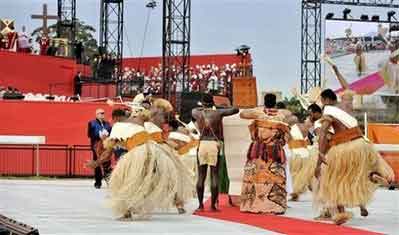
After the cultural revolution of recent decades, we are faced with a challenge no less great than that of the three moments of crisis that we have encountered in our historical sketch: the Gnostic temptation, the crisis at the end of the Middle Ages and the beginning of modernity, and the crisis at the beginning of the twentieth century, which formed the prelude to the still more radical questions of the present day. Three developments in recent music epitomize the problems that the Church has to face when she is considering liturgical music. First of all, there is the cultural universalization that the Church has to undertake if she wants to get beyond the boundaries of the European mind. This is the question of what inculturation should look like in the realm of sacred music if, on the one hand, the identity of Christianity is to be preserved and, on the other, its universality is to be expressed in local forms. Then there are two developments in music itself that have their origins primarily in the West but that for a long time have affected the whole of mankind in the world culture that is being formed. Modern so-called “classical” music has maneuvered itself, with some exceptions, into an elitist ghetto, which only specialists may enter—and even they do so with what may sometimes be mixed feelings. The music of the masses has broken loose from this and treads a very different path. [The Spirit of the Liturgy [SF, CA: Ignatius, 2000) p. 148]
2+(2).jpg)
.jpg)










.jpg)



No comments:
Post a Comment